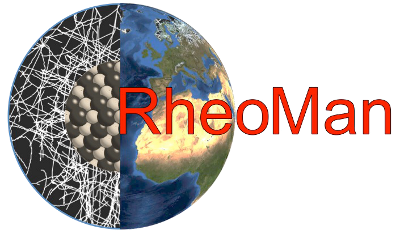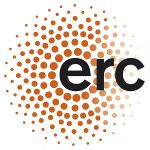Project overview
 RheoMan: a five-year, ERC-funded (Advanced Grant), project to model the rheology of the Earth's mantle
RheoMan: a five-year, ERC-funded (Advanced Grant), project to model the rheology of the Earth's mantle
Volcanism and earthquakes are spectacular manifestations of the internal activity of our planet which is still hot and dissipates about 44 TW. Transferring this heat through the thermally insulating mantle can only be achieved by convection. Recent developments in seismic tomography show evidences for both downwelling (subducting plates) and upwelling (plumes) mantle flows. Understanding mantle convection is thus essential to model the thermal and chemical evolution of the Earth and to constrain the forces driving plate tectonics. The rheological properties of the mantle are traditionally inverted from surface geophysical data (postglacial rebound, long-wavelength geoid anomalies). Radial profiles of the viscosity are thus available but a lot of uncertainties remain.
The mantle is made of solid rocks and flow observed over long timescale is the consequence of plastic deformation. Experimental deformation of rocks and minerals is extremely challenging in the conditions of the mantle which involve extreme P, T conditions. Moreover, strain-rates accessible in the laboratory are six orders of magnitude larger than those in the mantle.
The ERC-funded RheoMan project proposes a novel approach based on multiscale modelling of rheology. The goal of multiscale modelling is to link our understanding of a few elementary mechanisms (usually at the microscopic scale) with a behaviour observed at the macroscopic scale, which might be well characterized but which remains poorly understood. In solids, plastic deformation results from the motion of crystal defects: point defects, dislocations, grain boundaries. We focus here on dislocations which represent the most efficient strain-producing mechanism. RheoMan a procedure which combines three modelling ingredients in a logical chain :
- Dislocation core modelling at the atomic scale
- Dislocation moblity modelling
- Flow laws
Focusing on major minerals of the earth's mantle (wadsleyite, ringwoodite, MgSiO3 perovskite and post-perovskite), the RheoMan project will provide the first constraints on the rheology of the transition zone and of the lower mantle. This information will be transfered to geodynamicists during the project. It will also provide a new framework to describe the rheology of mantle minerals which is not based on a phenomenological approach, but on physical mechanisms.
Project launch: 1st of May 2012, Duration: 60 months initialy, extended to 72 months.
Total ERC-funding: 2 165 723 €
The project is hosted by Université Lille 1 - Sciences et Technologies.
End of the project: April 30th, 2018

